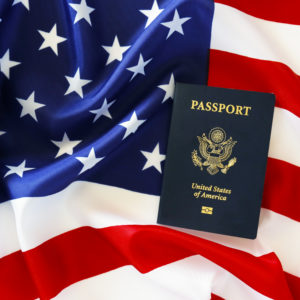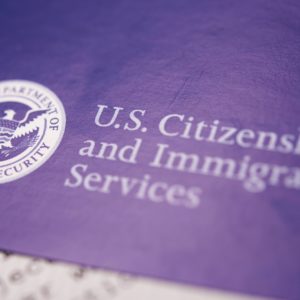Family Immigration
Much of the immigration to the U.S. that occurs is through sponsorship by a family relative. I fact: How do I sponsor my family member to immigrate to the United States? – is the most common question asked by our clients.
Family-based immigration allows for close relatives of U.S. Citizens and legal permanent residents to rejoin their families here in the U.S. However, the system is based on categories of relatives, each of which has strict annual limits in the number of immigrants allowed each year. Some relatives are considered “immediate relatives” and they are able to become permanent residents (“green card holders”) immediately. Other relatives are grouped into “preference categories” and they have to “wait in line” to become permanent residents.
The two main mechanisms of rejoining with family members are adjustment of status (i.e. the process when an immigrant becomes a permanent resident while inside the United States) and consular processing (i.e. the process of becoming a permanent resident by obtaining an immigrant visa outside the U.S. at a U.S. consulate or embassy abroad).
Immediate Relative U.S. Immigrant Visa Petitions
You are an “immediate relative” under the immigration law if you are:
- Spouse of U.S. citizen
- Parent of U.S. citizen
- Unmarried son or daughter under 21 of U.S. citizen
If you are an “immediate relative”, you are not subject to numerical limitations on immigrant visas and you do not have to “wait in line” for a visa to become available. If you are an immediate relative and you are currently in the U.S. after having been previously lawfully admitted (i.e. came on a B1/B2 visa, F1 visa, paroled, etc.), then you are most likely eligible to file for adjustment of status (“green card”) without having to leave the U.S. to apply for an immigrant visa abroad.
For immediate relatives who are outside of the U.S., the general application process known as consular processing is as follows:
- S. citizen petitioner (U.S. citizen relative who submits petition on your behalf) submits Form I-130 with fees and supporting documentation to USCIS.
- Upon approval by USCIS, the application is transferred to the National Visa Center
- The National Visa Center collects additional fees and documentation from the petitioner and relative.
- Once the National Visa Center has received all necessary documentation, the application is sent abroad to the appropriate U.S. consulate/embassy.
- The relative is scheduled for an interview, and if there are no issues, the relative’s immigrant visa is approved and they can travel to the U.S. to join their family member.
For immediate relatives who are inside the U.S. and were lawfully admitted (came on a B1/B2 visa, F1 visa, paroled, etc.), the general application process, known as adjustment of status, is as follows:
- S. citizen petitioner (i.e. U.S. citizen relative submitting a petition on your behalf) submits Form I-130 with fees and supporting documentation to USCIS.
- If eligible to do so, the intending immigrant relative concurrently files Form I-485 (adjustment of status), Form I-765 (work authorization), and Form I-131 (permission to travel) with appropriate fee and supporting documentation.
- In most cases, especially marriage-based, the petitioner and beneficiary are scheduled for an interview at USCIS.
Preference Categories for U.S. Immigrant Relative Visas
If you are not a spouse, parent, or unmarried child under 21 of U.S. citizen, then you still be a relative who falls under a “preference category” for whom U.S. citizens and permanent residents may apply fall. The following are the “Preference Categories” (F1, F2A, F2B, F3, and F4):
- F1: Unmarried sons and daughters (children 21 and over) of U.S. citizens
- F2A: Spouses and children under 21 of permanent residents
- F2B: Unmarried sons and daughters (over 21) of permanent residents
- F3: Married sons and daughters of U.S. citizens
- F4: Siblings of U.S. citizens
These categories have limits on the number of visas and therefore, there are waiting periods, which can run for several years. So, relatives in these categories have to “wait in line” to get a green card.
The waiting periods for each of these visas can be determined (approximately) by checking the U.S. Department of State Visa Bulletin each month. Visa bulletin lists each category and the date on which an individual applied in each category who is being processed for a green card currently. From this date, one can try to extrapolate how long it will take for an application filed today to take before a relative qualifies for green card. In addition to per category limits to family-based immigration, there are also per country limits. Because of higher numbers of immigration to the U.S., persons coming from the countries of Mexico, the Philippines, China, and India have an even longer wait than those from the rest of the world.
For preference-based relatives who are outside of the U.S., the general application process known as consular processing is as follows:
- S. citizen or Lawful Permanent Resident petitioner (i.e. U.S. citizen or LPR relative submitting petition for immigration relative) submits Form I-130 with fees and supporting documentation to USCIS.
- Upon approval by USCIS, the application is transferred to the National Visa Center, which is part of the U.S. Department of State.
- If a visa is not yet available, the file is then placed on hold.
- When a visa becomes available, the National Visa Center collects additional fees and documentation from the petitioner and relative.
- Once the National Visa Center has received all necessary documentation, the application is sent abroad to the appropriate U.S. consulate/embassy.
- The relative is scheduled for an interview, and if there are no issues, the relative’s visa is approved and they can travel to the U.S. to join their family member.
In some situations, a preference category beneficiary might be eligible to apply for their green card in the U.S. (known as adjustment of status) instead of applying abroad at a consulate if they happen to be in the U.S. pursuant to a lawful admission at the time a visa becomes available. In simple terms, the immigrant has to have maintained lawful status and has to have not violated the terms of his or her nonimmigrant status to be eligible for adjustment of status.
While it may seem absurd to file to sponsor your relative given that the wait is sometimes over five years, there still are good reasons to do so. If the annual limits per category are raised in the future, this waiting period will decrease. In any case, the sooner you file to bring your relative, the sooner your relative can be placed to “wait in line” to join you in the U.S. as a green card holder.
You are a U.S. citizen or Lawful Permanent Resident and you want to know which family member you can sponsor?
U.S. citizen can petition (file an application) for:
- biological parent and some cases step-parent or adoptive parent
- spouse
- unmarried son or daughter under 21 years of age
- unmarried son or daughter over 21 years of age
- married son or daughter
- brother or sister
The first three are immediate relatives and the last three fall in preference categories. If the relative of a U.S. citizen is married, the spouse and children of the family member are included in the petition.
Lawful permanent resident can petition (file an application) for:
- spouse
- unmarried son or daughter under 21 years of age
- unmarried son and daughter over 21 years of age
Affidavit of Support
In family-based cases, an affidavit of support from the petitioner (U.S. citizen or Lawful Permanent Resident relative) is required. The petitioner must demonstrate that he or she is able to support the intending immigrant financially at or above 125% of the federal poverty guideline for their household size. If the petitioner is unable to meet this requirement, a joint sponsor will be necessary to fulfill this requirement. The joint sponsor must be 18 or older, a U.S. citizen or permanent resident, and domiciled in the United States.
Marriage-based cases
The immigration laws take marriage fraud very seriously. Therefore, if you have a marriage-based case, you will need to provide substantial evidence that your marriage is “bonafide.” Such evidence includes, but is not limited to: children, joint assets, joint taxes, joint bank statements, joint bills, photos and travel together, and affidavits from family and friends. If you are called for an adjustment interview at USCIS, you will be questioned about your relationship. In some circumstances, you and your spouse may be questioned separately, especially if there is an issue of fraud. Also, USCIS will sometimes conduct a home visit to investigate whether or not you are residing together as a “bonafide” couple. There are severe penalties, both civil and criminal, that could potentially be imposed if you and/or your spouse are found to have committed marriage fraud.
Fiancé (K Visa) Petitions
Fiancé visas, which can only be filed by U.S. citizen petitioners, are similar to I-130 petitions for a spouse. One must demonstrate an intention to enter a good faith marriage. After the fiancé visa is approved by USCIS it is sent to the National Visa Center for review and then scheduling with the consulate. The beneficiary is called for an interview, and the visa is approved at the consulate. The beneficiary must come to the U.S. within six months, marry the petitioner within 90 days, and then file for adjustment of status within the United States.
Removal of Conditions on Residence
Immigrants who have been married less than two years at the time they obtain their marriage-based green cards are granted conditional permanent resident status, which is valid for two years. Within the 90-day period prior to expiration of the status, the immigrant must file a joint petition on Form I-751 with his or her spouse to remove the conditions on the status. Failure to file the application by the deadline could result in termination of the conditional resident spouse’s status and lead to the initiation of removal proceedings.
Divorce, separation or domestic abuse during the two-year conditional residency period can create problems for a sponsored spouse to achieve permanent residence status (i.e. get a 10-year green card), due to inability to file this application jointly. Legal counsel should definitely be sought before attempting to remove conditions in a divorce, separation and abuse situation.
Complicating Issues and Waivers
There are many things that can happen in a person’s background to prevent them from getting a visa or adjusting status in the United States. These events create inadmissibilities under the Immigration and Nationality Act and some grounds of inadmissibilities have waivers or pardons that can be applied for in order to waive the grounds. Our office successfully handles these kinds of cases and has won many waiver cases for such inadmissibilities as: prior orders of removal, unlawful presence, fraud, crimes, public charge, health, smuggling, and marriage fraud.
In 2012, the provisional waiver (Form I-601A) for unlawful presence became available state-side, meaning that persons would not have to leave the United States first to have a waiver approved. These kinds of waivers are the most common and require a showing of extreme hardship to a U.S. citizen or lawful permanent resident spouse or parents.
Waivers may be necessary in removal proceedings, with USCIS, or with consulates. We are experienced in handling waivers in these different contexts and advising clients of the appropriate order and timing of the case when a waiver is involved.
How We Can Help
For family members who are outside the U.S., we assist with completing and filing the petition with USCIS and waiver, if applicable, managing the case with the National Visa Center, and communicating with the embassy/consulate through the final stages for the visa interview.
For family members who are in the U.S. and who are eligible to apply directly for their green cards, we assist with completing and filing the petition and representation at the interview with USCIS and subsequently with the Removal of Conditions on Residence, if applicable.
More information:
We welcome you to contact the Law Office of Anna I. Garcia to schedule a consultation about how you can sponsor your family member to immigrate to the United States.






